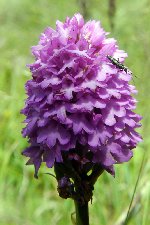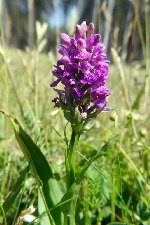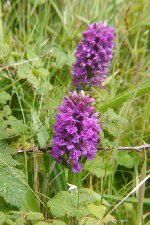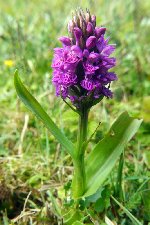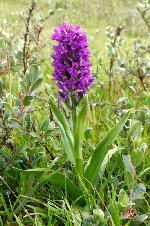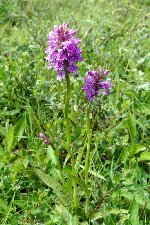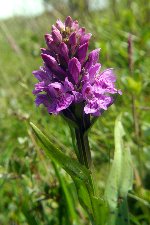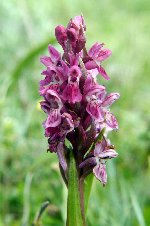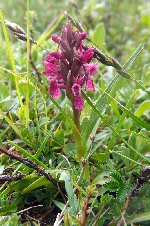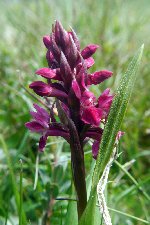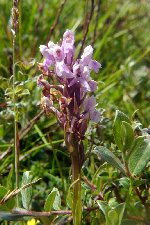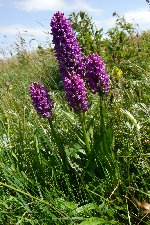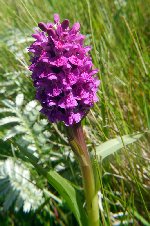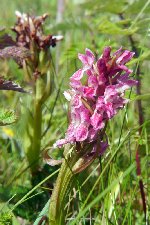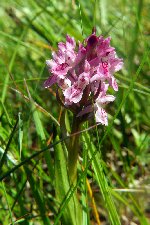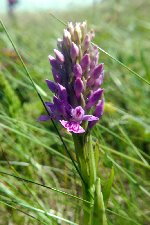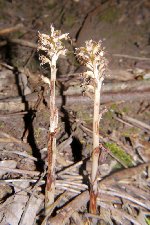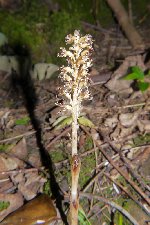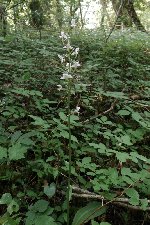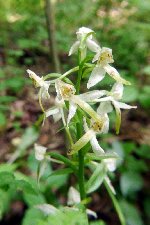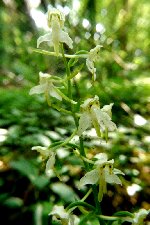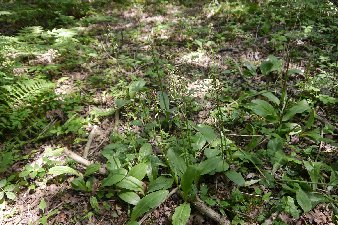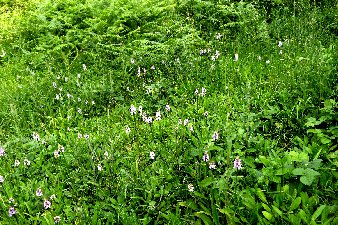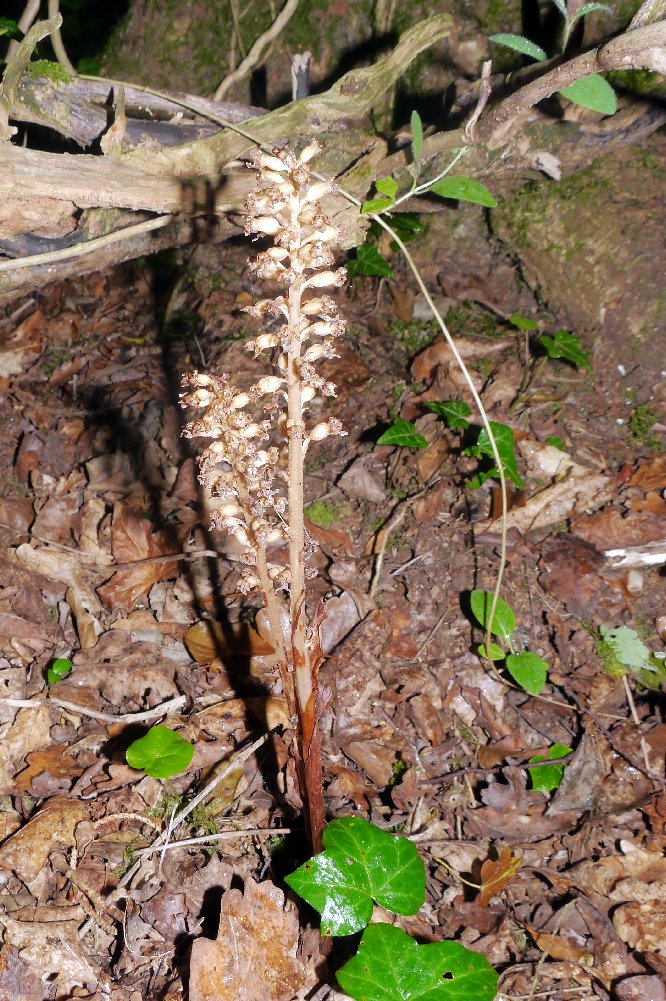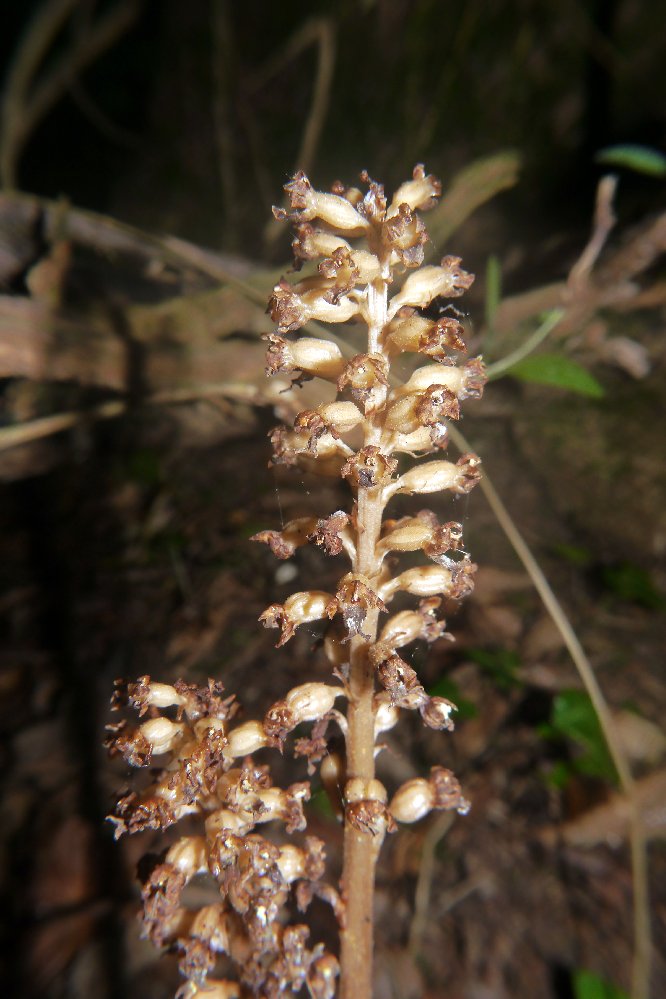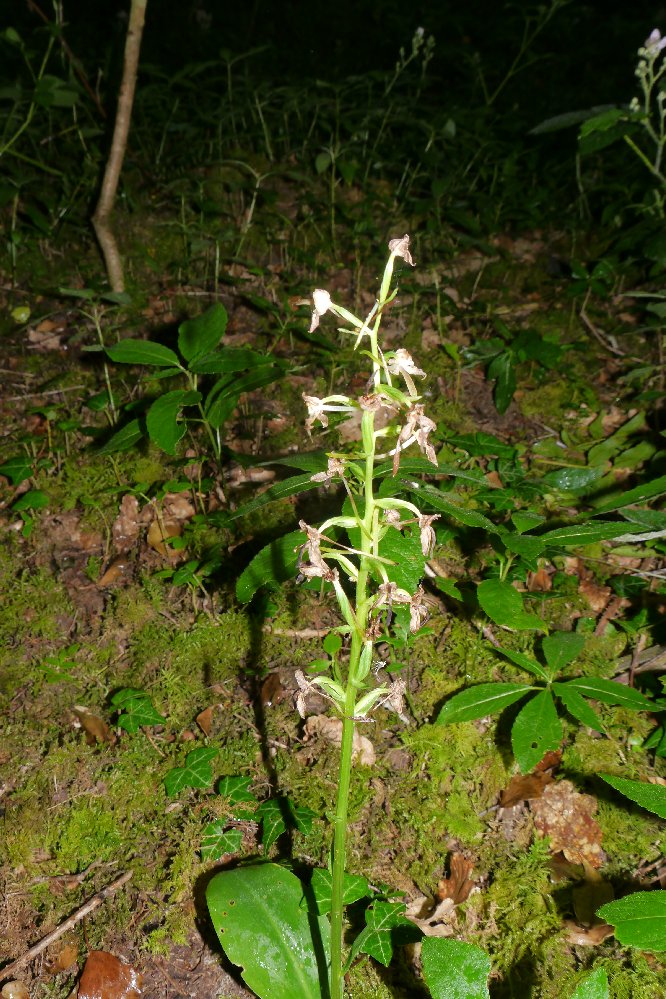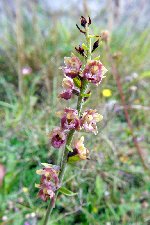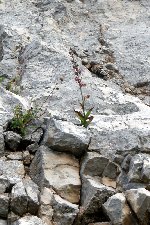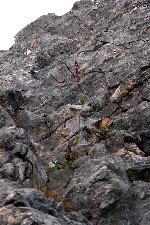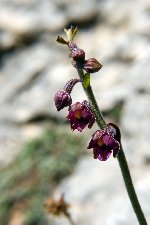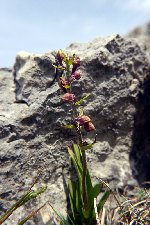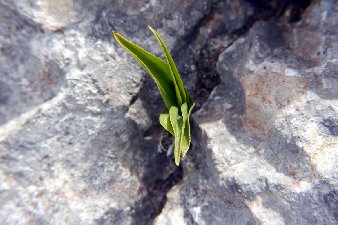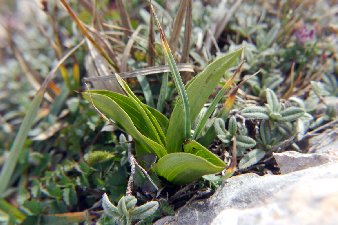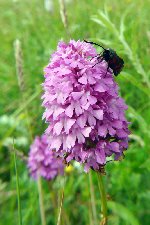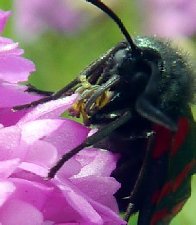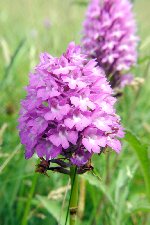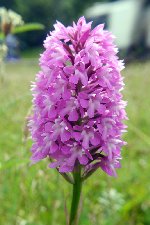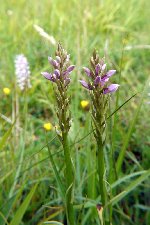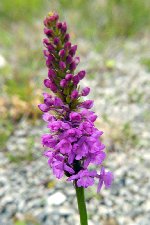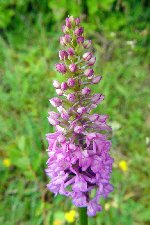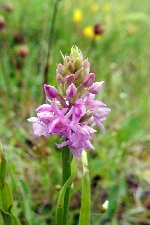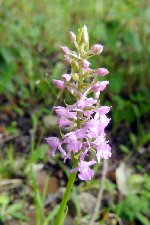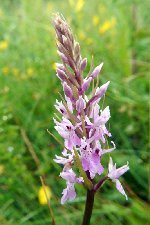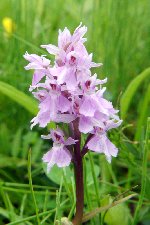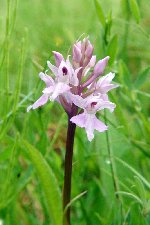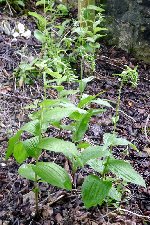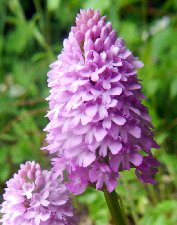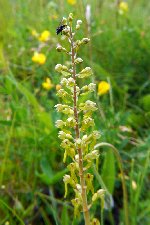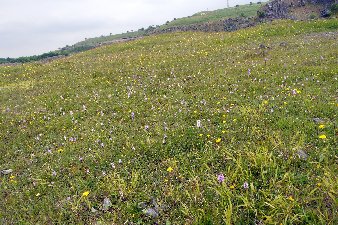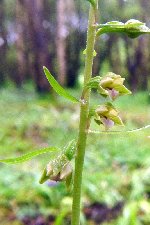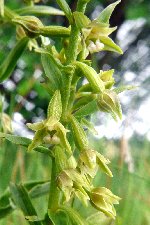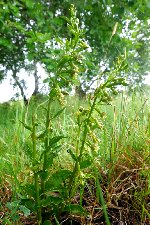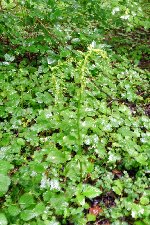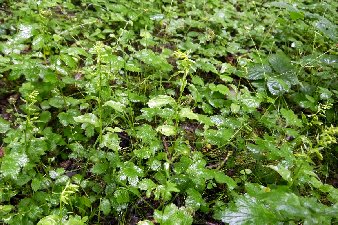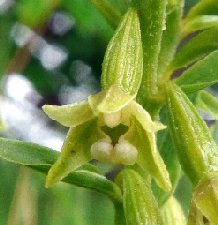|
|
|||||||||||||||||
|
|
|||||||||||||||||
 |
|
Newborough Forest and Warren, 15th June 2017 (SH432640) The moment we got out of the car at the forest car park it was apparent that we were in for a windy day and that photography may be a bit compromised. Actually photography here was doubly compromised by comparative lack of both orchids and anything new or worthwhile. There were Pyramidal Orchids to be seen everywhere, but nowhere in large numbers. Northern Marsh Orchids have been seen in reasonable numbers in other years, but only a handful are apparent today. The Dune Helleborines are in bud with the flower spikes becoming erect, but all looked a bit ratty. Things were better once we had moved across the Warren. There are plenty of Northern Marsh Orchids, many in good shape, and some that fit the bill for Welsh Marsh Orchids - which is not surprising as this is one place where they are said to be found by some authors. The Early Marsh Orchids ssp coccinea are all quite low growing, but spring into vision when you get close to them. The incarnatas seem to be absent, apart from one plant, going over, which had pale flowers with a dash of purple.
Elsewhere, we went off the usual track across the Warren, but found that away from this the orchid count dropped dramatically. There were plentiful Marsh Helleborines not too far off the first flowers opening, Common Spotted Orchids mainly with very pale flowers or white even, and a few Common Twayblades dotted around. Aberffraw, 15th June 2017 (SH3689069197) These dunes are only about a 10 minute drive from Newborough village, so it surprising that we havenÉ?™t been here before during the peak of the orchid season. Previously we have only seen ripening seed heads. A mile long straight road cuts the dune system in half. There is a good display of marsh orchids around a slight depression - not quite a ditch - that parallels the road. The Northern Marsh Orchids are all of a good height, and the same can be said of the Early Marsh Orchids, with both ssp coccinea and ssp incarnata - the latter flowering later than Newborough, and showing some very fine central lip markings. On the roadside at junction 11 of the A55, heading towards Anglesey, is a group of orchids which by the colour must be Northern Marsh Orchids. I had seen that Bird's-nest Orchidsgrew on Great Orme, and another posting narrowed it down to the Happy Valley area. In fact there are few places on the Orme that can be said to be woodland, home to this orchid. In actual fact we had covered much of the woodland surrounding the gardens, and were nearly giving up, when we came upon three plants well beyond their best. Flash photography was needed. There were some Pyramidal Orchids on the nearby steep grassy slopes too. Llynllys Common, 19th June 2017 (SJ2757524002) Surprisingly, for such a local site, it has been five years since we climbed the hill to the common. Perhaps its the hill that put me off. Things have changed up top. There are some ponies up there which would help keep undergrowth at bay, but not the bracken which has swamped the grassland. The other expected species were all there; Early Purple Orchids in seed, Common Twayblades and Common Spotted Orchids putting on a great show in places. Pyramidal Orchids are just in flower down at Scabby Rock Quarry. While walking on the Wirral peninsula we took in Cubbins Green overlooking the Dee estuary near West Kirby, and Thursaston Common. The noticeboard at the entrance to the common has a picture of a Southern Marsh Orchid. We saw no evidence of any, which repeats our experience of numerous previous visits. The Wirral Walks guide states that `the rare Bee Orchid has been found' at Cubbins Green. We met up with a volunteer who told us he had never seen a Bee Orchid there; and he was quite conversant with the wild flowers that did grow there. However the printed reference may have been from 10 years ago or so, when someone presented a single picked flower to one of the wardens. These are classic examples of you may just see a kingfisher syndrome. Coed Cilygroeslwyd, 22nd June 2017 (SJ124553) Our second visit to the Wood of the Grey Cross. The primary aim is to rediscover the Bird's-nest Orchids that we saw way back in 2013. One reference to these states that these flower each year but never in the same place. Despite a careful search none were found where we saw them previously. We did eventually find two close together a bit off the path. There seems to have been a high percentage of successful ferilisation, with most flowers having a swelling seed pod. The other noteworthy species here were Greater Butterfly Orchids and these are dotted about but are well and truly gone over. Flash photography was needed with both species. There is no sign of a group of Common Spotted Orchids that were growing by a field gate on the previous visit. On the return journey. passing through Bwlchgwyn I notice a patch of Common Spotted Orchids on the roadside verge at the same point where Early Purple Orchids had been seen before. I didn't stop. We decide to look for the Dark Red Helleborines here both on the roadside first and later on the summit above. The roadside was a bit disappointing at first, with none seen initially. Then there was a nice plant that looked rather dull, and certainly the flowers weren't particularly red or dark. Actually the colour scheme made me think rhubarb and custard. A similar colouration has also been reported from Hutton Crags and called `lemon petaled'. A few flower spikeless plants were eventually found. However, looking up at the rock towering over us we see a few classic plants growing in cracks in the rock. One of these is an old friend.
Llanddulas A55, 26th June 2017 (SH909785) I have previously made mention of orchids growing in the verges along the North Wales Expressway between Llanddulas and Colwyn Bay. Obviously you cannot just pull up for a look, but on the eastbound carriageway near junctuon 23 there is a large layby. behind this is a large sloping grassy area with a 1000+ Pyramidal Orchids and perhaps a similar number of Common Spotted Orchids. While all these seem to be quite typical (apart from a matching pair of mis-developed Common Spotteds) they nevertheless provide a grand show. One Pyramidal Orchid was being visited by a Burnet Moth. The pollinia from one flower can be seen stuck to the insect's proboscis.
Minera Quarry, 27th June 2017 (SJ253521) Here again for the Marsh Fragrant Orchids and though they are only just flowering they put on a great show - there must be several thousand here. There is quite a range of colour, but we cannot spot the pure white form seen last year. In fact as I review the photographs it is apparent that both Marsh and Chalk Fragrant Orchids Its always tempting to look for hybrids, especially where two different genuses grow in large numbers at the same place. Here there are the Fragrants, Common Spotted Orchids and Pyramidal Orchids literally intermingled. My eyes were drawn to these flowers. I have to conclude that they are simply variations of Common Spotteds, but they stood out for the pink wash colour on the lip and lack of the usual bold magenta patterns (just a fine speckle) This visit we explored further, right into the large most recent pit beyond where we normally go. Nothing new to report here, apart from a large display of Common Spotted Orchids above the hole. Elsewhere, the Broad-leaved Helleborines are coming on nicely but still need a couple of weeks. Some the Pyramidal Orchids seem to show a small notch at the tip of the central lobe of the lip. I have not noticed this elsewhere, but its not that noticeable. Alyn Waters Country Park, 30th June 2017 Having read that the Warwickshire Dune Helleborines are just starting to flower I thought it may be good to see if we had some June Dunes too! They are only just a few, on plants growing in good light. Not many at all. But the Green-flowered Helleborines are doing better, with some well and truly in flower. Actually 2017 seems to be a bumper year for our GFHs. Normally they show much slug damage with over half missing flower spikes. This year very few are damaged. This may be a benefit of a dry spring reducing the number of slugs. Almost certainly the local variety is Var pendula. The hypochile or cup is well developed, while the epichile is heart-shaped, as long as broad, and strongly curled under. |
||||||||||||||
|
|
||||||||||||||||||||
